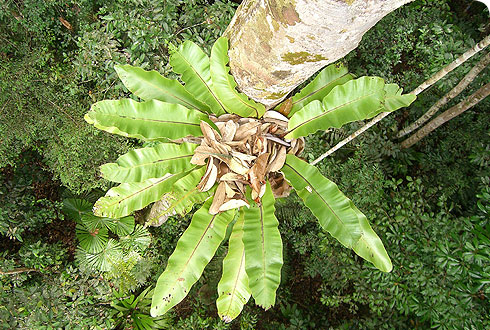Asplenium nidus (bird's nest fern)
These litter-basket ferns - so-called because the basket-shaped rosette of long fronds trap falling twigs and leaf litter - can be up to 2m in diameter, and large ferns can contain substantial quantities of organic matter.
At the base of the fern is a sponge-like root mass that soaks up rain water and absorbs nutrients released from the decaying litter.
In Borneo, the rainforest canopy has approximately 50 Asplenium nidus per hectare. They grow on tree trunks and branches at heights of up to 60m above the ground.
In one study, several large bird’s nest ferns were removed intact from the canopy and lowered to the ground using winches, ropes and pulleys, and were found to weight between 170 and 200kg.
Species detail
-
Biology and distribution
Asplenium nidus is 1 of several closely related species that all have the common name bird’s nest fern. It is often found growing on trees. Discover where you might spot it.
-
Canopy ecology
Bird’s nest ferns form an important part of the forest canopy and provide a home for an enormous range of species. Read on to discover just how many animals live in them.
-
References
Get reference material for Asplenium nidus.
Images
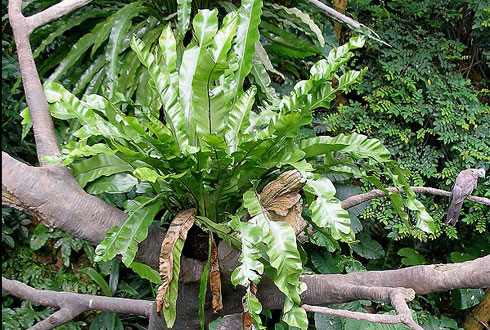
Asplenium nidus growing on a tree in Hong Kong.
© Andrew Orme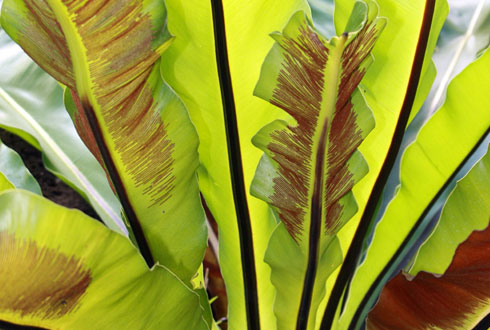
Linear sori on the underside of Asplenium nidus fronds.
© Eric La Fountaine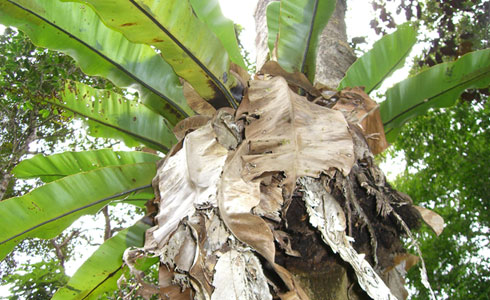
Underside of Asplenium nidus in Borneo, showing skirt of dead fronds.
© David T Jones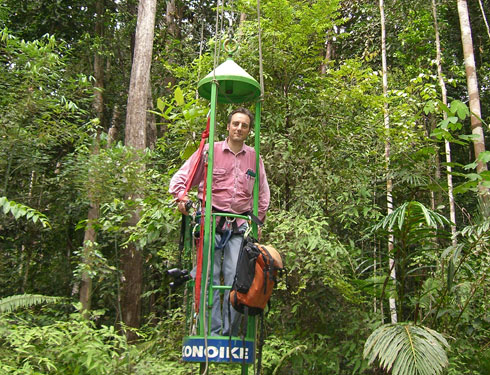
The author in a crane gondola.
© David T JonesAbout the author

Dr David T Jones
Research Associate
Department of Entomology
Research interests include termites, earthworms, soil biodiversity and rainforest ecology
A word from the author
"To understand the role these ferns play in the ecology of the rainforest, you have to get into the canopy. Sticking your hand into a bird’s nest fern while dangling from a climbing rope at 50m above the ground can be a bit scary. You never know if you are going to encounter biting ants, a giant centipede or a snake. At some research sites access to the canopy is easier thanks to aerial walkways of cable bridges suspended between tree crowns. A few sites even have a crane in the forest, so you can stand in the narrow gondola and get lowered into any part of the canopy."
